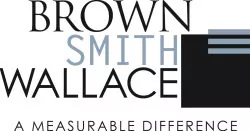Who can resist a bargain? Employees, when buying health care services, it appears. A steady trickle of academic studies is making it clear that few employees are using available price comparison data to choose lower cost providers and packaged medical services.
Search for Clarity
Price transparency tools were once seen as a potential panacea for rising health costs — particularly in light of the rise of high-deductible plans that give employees more skin in the game. Legislation has been enacted in at least half of the states mandating the establishment, by health care organizations, of websites that provide some level of price transparency.
In analyzing the disappointing results of their studies, authors and analysts who are reading those studies are working on ways to make employees more cost-conscious. The goal, of course, is to save precious dollars for both the employees and their employers. This is all part of continuing efforts to reach the affordability objectives mandated under the Affordable Care Act.
Frigid Water
For context, one can look to a recent large study by a team of Harvard researchers that threw frigid water on the utility of a price transparency tool for outpatient services created by a health care analytics company. The study focused on the kind of outpatient services that people can most readily secure in a nonemergency situation, when comparison shopping is more realistic.
Nearly 300,000 employees of one employer were granted access to the tool in question. Their pattern of health care service selection was compared to around 150,000 similarly situated employees at another company, for whom the tool was unavailable.
The tool was relatively sophisticated. It would tell employees what their out-of-pocket cost would be for services from different doctors, hospitals and "other clinical sites" — not simply the total charges that would be incurred by the insurance carrier (or self-insured employer) and the employee.
Also, the tool used "episode-level prices." This means the price that employees would see for a colonoscopy, as just one example, would include the estimated fee for the physician performing the procedure, separate anesthesia charges and laboratory charges. Such a comprehensive pricing approach makes apples-to-apples comparisons easier.
Interesting Results
The Harvard study unearthed a couple of particularly interesting results. First, the year after being offered the tool, overall employee out-of-pocket spending rose by 10%. Meanwhile, it went up only 6% for employees of the company that didn't offer the tool. The results were essentially the same for the total cost of the services, not merely the employees' share.
Second, in the first year it was available, only 10% of employees used the tool. Presumably the tool was introduced to employees with a lot of hoopla, as is standard operating procedure when any big new health benefit feature is made available. After two years, only 20% of employees had used it.
The authors' conclusion: "Offering a price comparison tool was not associated with lower health care spending." According to health economist Austin Frakt, "Study after study has showed the same thing."
3 Additional Points
In reviewing the results, the Harvard researchers made three additional points:
- Low visibility may be a problem. Sporadic use of the tool in this study, and others, could occur because "patients don't find the information compelling or may simply forget about the tool if they seek health care infrequently."
- Relatively few of the medical services rendered are "shoppable." Employees might need the service too urgently to have the time to shop around. In addition, if the most competitively priced service is higher than the employee's deductible, the price difference becomes less relevant.
- Physician loyalty could play a role. One category of medical service that, in theory, could be the most shoppable — a standard physician office visit — actually isn't. Why? Because patients often become attached to their primary care doctor and are willing to pay more to see him or her.
The study also found evidence that some employees chose more costly providers on the theory that higher price automatically equates to higher quality.
Research Recommendations
Does this mean there's no hope for price transparency tools? Not necessarily. The Harvard researchers and others who have pondered the tools' shortcomings so far offer several recommendations to make them more effective.
One common suggestion is giving employees not just price data, but also quality assessments and other indicators that will help them assess value. That is, sometimes it's cheaper in the long run to pay more — but not always.
According to a report by the "price transparency task force" of the Healthcare Financial Management Association, price data should be supplemented by "other relevant information related to the provider or the specific service sought, [for example] clinical outcomes, patient safety, or patient satisfaction scores."
But what good would that do if employees don't even look at it? One way to address the problem of employee indifference to price, if the cost of a service will exceed their deductible, is a radical change in health benefit plan design to a "reference pricing system." This means the health plan sets a price it will pay for a given service while the employee must pick up the tab for any excess.
Also, experts advise employers to never underestimate the amount of effort they need to undertake to get employees' attention when introducing something new.
Smart Shoppers
Price transparency is more complicated than installing a clear windowpane between patient and provider. But, as the state of the art evolves, the picture should get clearer. It's in employers' best interests to monitor this evolution and encourage employees to be smart health care shoppers.
For more information, please contact Ron Present, Partner and Health Care Industry Group Leader, at 314.983.1358 or rpresent@bswllc.com.
The content of this article is intended to provide a general guide to the subject matter. Specialist advice should be sought about your specific circumstances.


